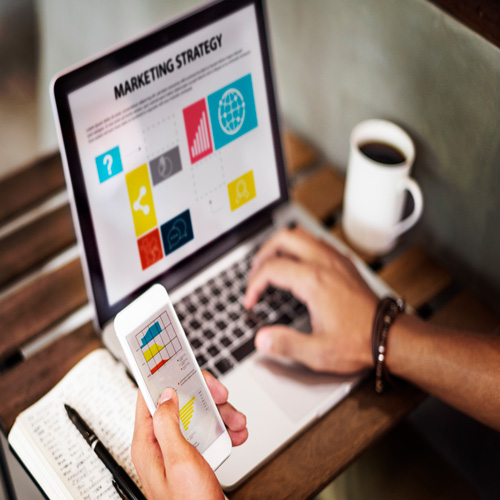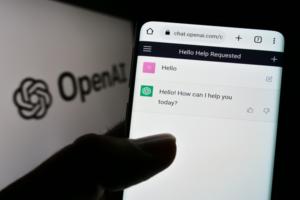Important takeaways
- A digital marketing funnel depicts the path of a customer from awareness to purchase.
- To be effective, each level of the conversion funnel requires a distinct approach and a distinct sort of content.
- You may maximize conversion with your marketing spend by understanding your digital marketing funnel.
- As a small business owner, you want every dollar spent on marketing to be as effective as possible. That involves investing intelligently in order to convert as many client leads as possible into buyers.
Understanding your digital marketing funnel and tailoring your strategy at each level will most likely result in a good return on your marketing spend. As a result, you’ll spend less time, effort, and money on unqualified leads that don’t convert into sales.
Discover what a digital marketing funnel is and why you require one. Then, plan out the various stages of the funnel so that you can effectively convert customers.

What exactly is a sales funnel in digital marketing?
A digital marketing funnel depicts the full buying journey, from the moment a potential customer learns about your brand to the moment they purchase a product and beyond.
Marketing funnels were created to assist sales teams in understanding a buyer’s path through the sales process. They enabled salespeople to deliver the appropriate help at the appropriate time, increasing their chances of making a deal.
Since then, the concept has been expanded to include online marketing and communication strategies in general. The goal is to concentrate your marketing efforts so that you can maximize your website traffic and convert as many potential customers as possible into sales.
How does a digital marketing funnel work?
Understanding your digital marketing funnel allows you to optimize your marketing efforts and boost your conversion rate.
Before a customer can buy from you, they must first locate you. Then they’ll probably compare what you’re selling to what other providers are offering before opting to buy—hopefully from you.
Throughout the process, you have the opportunity to either establish credibility and trust from your potential consumer or to frustrate them. The goal is to understand what your potential consumers are looking for at each stage of their customer journey. Then, at each stage of the conversion funnel, you can strategically plan your marketing tactics to deliver the right ads, helpful content, and gentle nudges to move them to the next stage.
You’re getting ready to build your digital marketing funnel

Before you can begin to imagine what your customer experience will be like, you must first understand your target demographic.
One of the greatest methods to accomplish this is to establish client personas based on the various types of people that may purchase from you. Create categories based on key demographics that make sense for your organization. For example, some demographics about your customers that you should be aware of include:
- Gender
- age bracket
- Relationship status
- Education level
- Income
- Occupational title
- Hobbies and/or objectives
- They use social media platforms
Assume you sell cosmetics with glitter. In this scenario, your major buyer persona may be a young, single woman who frequents cocktail lounges and publishes images of her nights out on social media. If you sell high-end hardware tools, on the other hand, you’re more likely to have a customer persona of an older man with some disposable income who watches online DIY videos—and a second customer persona of a professional builder who works with tools all day.
These personas assist you in profiling who your potential customers are, what matters to them, and what their pain points are.
Understanding this provides insight into the path these customers may take to find you and how they may react at each stage of the digital marketing funnel.
A digital marketing funnel’s six stages
The funnel’s key stages, from top to bottom, are as follows:
- Exposure. Ensure that your brand is visible and that customers can simply locate you.
- Discovery. Once they’ve discovered your brand, enlighten them about your products and services.
- Consideration. Assist customers in comparing your offerings to others. Emphasize the benefits of your products or services.
- Conversion. Make it simple for them to determine whether or not to buy from you.
- Customer service after the sale. Deliver an exceptional experience throughout the fulfillment process, from start to finish.
- Retention. Encourage them to return and purchase from you again.
Because loyal customers feed back into the process—that is, they return to your business without you having to earn their trust all over again—the funnel stages are sometimes depicted as a loop.
Let’s take a closer look at these stages and see which approaches work best for each one. Content should be customized for each stage of the funnel: top, middle, and bottom.
What is going on at each stage of the funnel?

Before a potential consumer knows anything about your company, the customer journey begins. Your initial task is to assist them in locating you. Once they do, their interaction with your brand is critical, beginning with the initial point of contact.
1. exposition
Lead generation occurs during the awareness stage of the digital marketing funnel. Your goal is to reach as many potential customers as possible through brand awareness. You want to show prospective customers how your product or service can help them solve their problems or alleviate their pain points.
Digital advertising is one method for making your company stand out in online search results. You may set up pay-per-click (PPC) ads on LinkedIn, YouTube, Twitter, or Facebook depending on whatever social media platforms your prospective clients use. You may need to test a few platforms and monitor your analytics to see which one works best for your company. You can begin investing in Yelp Ads when you claim or add your business to Yelp. This increases exposure for your company by displaying your listing in a number of prominent locations on the site and app, including above relevant search results and on competitor pages.
You should also be familiar with search engine optimization (SEO) so that your material appears higher on search engine result pages (SERPs). You can accomplish this on your own using your own keyword strategy, or you can hire a content marketing or digital marketing organization to do it for you.
2. Investigation
Prospective clients who have recognized your brand may now interact with you on social media and click over to your website’s landing page. This is when the consumer experience truly comes into play.
They’ll be curious about who you are and what you have to give. To reassure potential leads about your company, your website should be well-designed and provide credible information. Make your menus, product pages, and search function as user-friendly as possible so that potential customers can easily find what they’re looking for.
Your customer service contact information should be readily displayed so that customers can contact you if they have any questions. Potential clients are more likely to switch to a competitor if your website is difficult to access or loads slowly.
It’s also critical to capture prospective consumers’ contact information on your website so that you may remain in touch with them in the future via email marketing campaigns. Visitors can easily enter their information by using a pop-up invitation to join your email list or a form on your homepage, contact page, or page footers.
Consider offering a modest reward in exchange for their email address, such as a discount on their first purchase or a tiny freebie, to entice them.
3. Take into account
At this point in the digital marketing funnel, your potential consumer has learnt a little bit about you and is aware that you provide a product or service that they are interested in. They will now begin to compare your company to its competitors.
To assist them in selecting you, define your unique selling point (USP), or what distinguishes you from other providers. Share detailed product or service descriptions as well, so people know exactly what they’re getting. If you have any special offers, make sure they are prominently displayed.
Consider providing a blog, infographics, or webinars that explain what you do or show how to utilize your products so that potential buyers regard you as a trustworthy expert who provides high-quality goods or services.
4. conversion
Your prospective consumer is about to make a decision. Provide case studies, testimonials, and reviews about your brand, products, or services to assist them. You can use Yelp reviews on your website or get a “Find us on Yelp” sticker for your window display to direct people to the positive feedback left by your current customers.
Offer online support in the form of a frequently asked questions (FAQ) section or a live chat function to further assist prospective customers in making their decision.
5. Customer relationship after the sale
After placing their order or scheduling their service, your new customer is excitedly awaiting the arrival of their product or the arrival of their appointment time. It is your responsibility to reassure them that you will be present throughout the fulfillment procedure.
Make sure you’ve issued a confirmation email thanking them and informing them of the procedure and what they should expect. If possible, keep them up to date as you go. If you’re shipping a physical product, notify them once it’s been packed and shipped. If it’s being delivered by a third party, provide them with a tracking number or an online tracking link.
If they’ve ordered a service, you can also send them a confirmation email with instructions on what they need to do next. Include contact information for your customer service team in each email in case your new customer has any questions.
6. Maintenance
If everything went successfully in your digital marketing funnel and your new customer’s experience was quick and easy, you’ve most likely acquired a delighted repeat customer.
Encourage new clients to return by getting in touch with them through regular email marketing. Send customised newsletters to inform them of new items, tips, and tricks. Invite them to participate in your loyalty program. Make the offer more appealing by including loyalty points, special offers, free shipping, or a small prize if they join your program.
Continue to nurture those repeat clients, and they will become brand champions for you, suggesting your company to their friends and colleagues. Encourage advocacy by offering a referral program that pays them with points or discounts.
Build your business by utilizing your digital marketing funnel
Your digital marketing funnel charts your customers’ journey from first becoming aware of your brand to becoming loyal customers. Understanding your marketing funnel helps you focus your advertising dollars, informs your digital marketing strategy, and increases your conversion rate.
As the consumer progresses through the digital marketing funnel, you should supply them with the appropriate content and support to persuade them to advance to the next level. Use advertising and content marketing to attract them, make sure your website has all the information they need (including useful product details and contact information), and provide outstanding customer service along the process.
With this strategy, you’ll be able to convert as many potential customers as possible while lowering costs and increasing profits. Discover four steps to creating a marketing budget to stay on budget.










